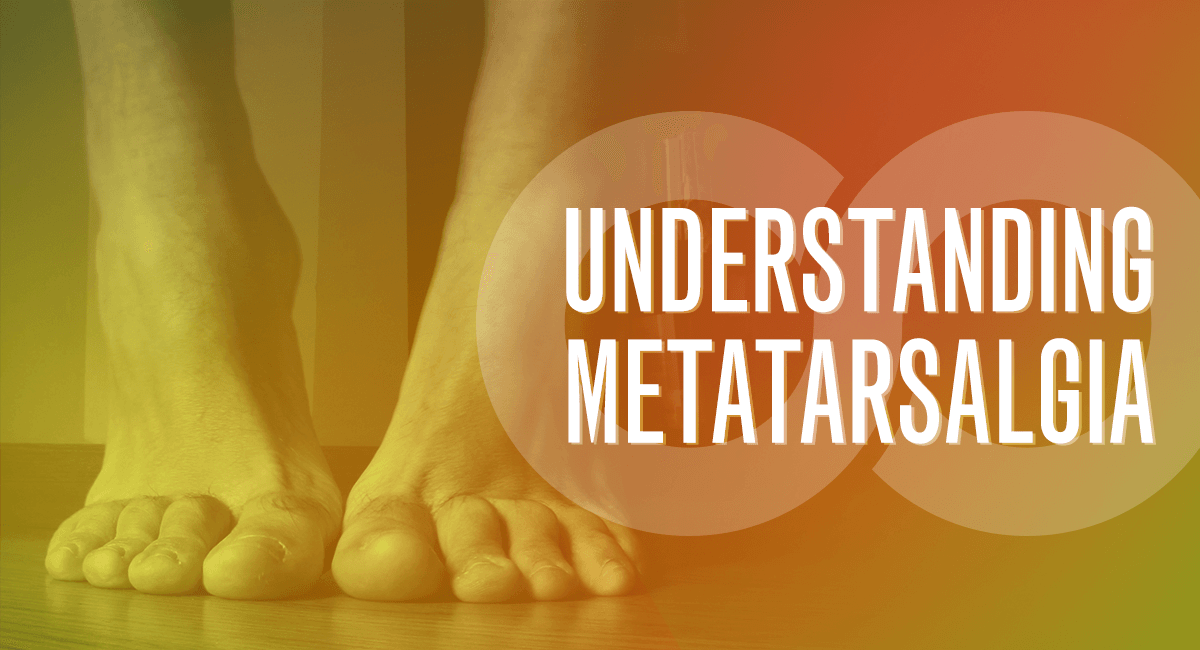Metatarsalgia

While walking or running, our foot is the first part of our body to touch the ground and the last part of our body to leave the ground. Through the contact from our feet on the ground all the force generated from our hips, knees, ankle, and even our upper body are transferred to the ground. The ground, in turn, pushes back at us, and now we have locomotion. Since our feet is the only point of contact with the ground and the only means to transfer forces to and from the ground, keeping the feet healthy is an important aspect in functional mobility such as walking, running, climbing stairs, and even simple sit-to-stands.
So you can see how pain or dysfunction in our feet can decrease our functional mobility and ultimately our quality of life. One topic I would like to touch on regarding the feet is something called metatarsalgia.
Metatarsalgia is pain and inflammation at the ball of the foot. The pain may increase with during weight-bearing activities such as standing, walking, and running. During these activities, the pain may be sharp and shoot to the toes and over time numbness and tingling may accompany the pain. A lot of times, people will feel like they have a pebble in the shoe.
Metatarsalgia can develop if the normal mechanics of the foot is compromised. Some of the causes that might lead to metatarsalgia include:
- Certain foot shapes, such as having a high arch, which may put excess pressure to the ball of the foot, or having a second toe that is longer than the first toe causing more weight to be shifted to the second toe.
- Repetitive weight-bearing activities such as running. The ball of the foot absorbs a lot of force when running especially if you don’t have the proper foot wear, which leads to the next point.
- Shoes that are narrow with a tight toe box and lack of cushion can lead to increased pressures to the ball of the foot. Also, shoes that transfers weight to the front of the foot can increase pressure to the ball of the foot. High heels are a great example of this.
- Excess weight leads to increased pressure to the front of the foot when walking and put someone at risk of pain to the metatarsal.
- Certain foot deformities such as claw toes, hammer toes, bunions, arthritis, and gout can also lead to metatarsalgia.
- Stress fractures, or small breaks in the toe bones, can of course be a source of metatarsalgia.
The best way to treat metatarsalgia is to be proactive and have a preventative mindset. Wear properly fitting shoes especially with activities, keep the weight at a healthy level, limit time in heels, and diversify activities so you are not pounding the feet repetitively during every workout. If the ball of your foot is already hurting, you may get a custom made orthotic to insert into your shoe or a simple metatarsal pad to cushion the area of tenderness. An important aspect of treating and even preventing metatarsalgia is making sure the foot is moving the way it should. There may be soft tissue restrictions and stiff joints in the foot and ankle, and even up the kinetic chain, that are leading to poor foot mechanics and causing increased forces to be transferred to the front of the foot. You can also check out these previous blogs to strengthen the feet and improve ankle mobility.